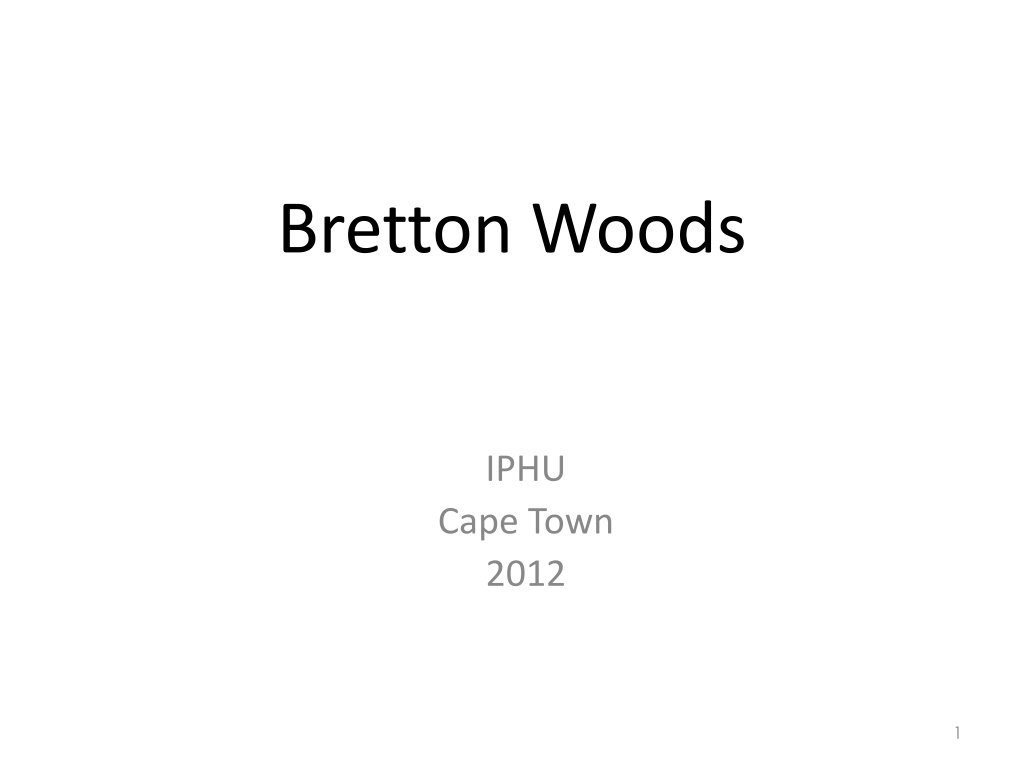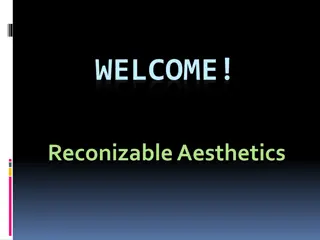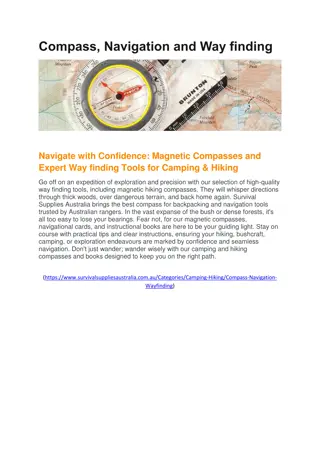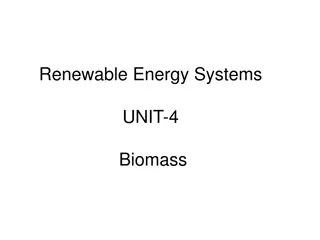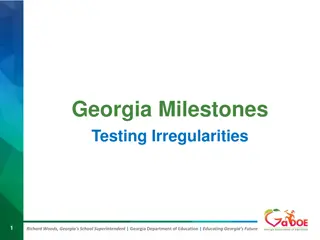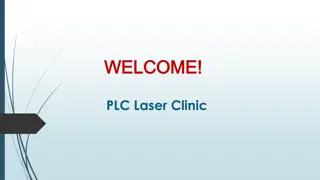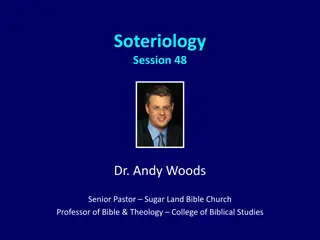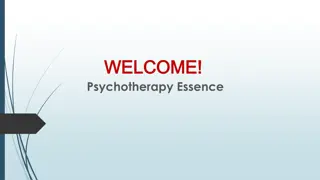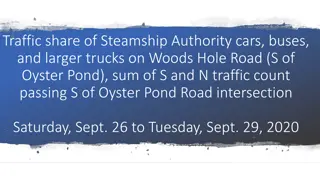Bretton Woods
The Bretton Woods family, including the IMF, World Bank, and WTO, was established in 1944 to address global economic challenges. The IMF played key roles in lending to countries to stabilize currencies, responding to the Third World Debt Crisis, and contributing to global economic debates. Structural adjustments, initiated by the IMF and World Bank, aimed to restructure economies but faced criticism for widening inequalities and harming vulnerable populations, leading to ongoing discussions on their impacts on health in developing nations.
Download Presentation

Please find below an Image/Link to download the presentation.
The content on the website is provided AS IS for your information and personal use only. It may not be sold, licensed, or shared on other websites without obtaining consent from the author. Download presentation by click this link. If you encounter any issues during the download, it is possible that the publisher has removed the file from their server.
E N D
Presentation Transcript
Bretton Woods IPHU Cape Town 2012 1
The Bretton Woods family (1944) International Monetary Fund (IMF) World Bank (WB) World Trade Organisation (from 1995) replacing the General Agreement on Tariffs and Trade (GATT) 2
International Monetary Fund 1944: IMF created in order to lend to countries to prevent currency fluctuations due to short term imbalances in trade flows 1950s - 1980s: private sector international financial institutions take over short term trade financing IMF a fund without a function? 1970s - 1980s: Third World Debt Crisis new role for IMF as lender of last resort and world economic policeman 2007: widening debate about reform of IMF 2009: further discussion of strengthening the regulatory role of IMF over global economy 3
The debt crisis and structural adjustment 1973 OPEC oil price rises 1973 - 1980 Loan salesmen on the loose (negative interest rates!) 1981 Reagan, monetarism and interest rates IMF structural adjustment packages 1989 Adjustment with a human face? The World Bank joins the Fund in policing the debt 1999 Structural adjustment replaced by Poverty reduction strategy papers 4
Structural adjustment Cuts in public spending Removal of price controls Freezing of wages Emphasis on production for export Import liberalisation Incentives for foreign investment Privatisation of public sector services Devaluation (to make exports cheaper) 5
Impacts of structural adjustment Widening of inequalities Reduced purchasing power for the poor (increased prices, withdrawal of subsidies, freezing of wages) Downsizing of public sector Lowering the safety net User pays in health care Reduced support for subsistence agriculture Economic growth (in some cases) 6
Criticism of the impact of SAPs on health in developing countries Adjustment with a human face (UNICEF, 1989) Health dimensions of economic reform (WHO, 1992) Breman and Shelton (2001) Structural adjustment and health: a literature review of the debate, its role-players and presented empirical evidence http://www.cmhealth.org/docs/wg6_paper6.pdf 7
World Bank 1944+: to fund large scale development projects (in developed world) 1950s - 1980s: private sector funding takes over long term capital funding (for developed world); WB attention shifts to developing countries 1980s+: WB joins IMF in managing Third World debt 1990s+: WB becomes major development assistance funder (far surpasses WHO as a donor to health projects) 8
Investing in Health (WB, 1993) Response to criticism of impact of SAPs on health Reconciling structural adjustment with health improvement? health improvement despite poverty proceeding with SAPs regardless 9
Poverty Reduction Strategy Papers SAPs reinvented Country governments required to devise their own SAPs IMF funding is still contingent on neo-liberal reforms (the Washington Consensus) 10
World Trade Organisation Established 1995, based in Geneva 141 member countries Structures Director-General Secretariat Ministerial Conference General Council specific councils Disputes Settlements Body (DSB) 11
Trade regulation 1944 - 1995 GATT progressive re-negotiation of international agreements on tariffs slow progress towards trade liberalisation (especially manufactured goods) 1995: finalisation of the Uruguay Round of GATT negotiations establishment of World Trade Organisation 12
Agreements Multilateral Agreements on Trade in Goods (13) General Agreement on Trade in Services (GATS) Agreement on Trade-related Intellectual Property Rights (TRIPs) Understanding on Rules and Procedures Governing the Settlement of Disputes (DSU) Trade Policy Review Mechanism (TPRM) (non mandatory) agreements (5) 13
Agreements on Trade in Goods General Agreement on Tariffs and Trade (GATT) Agriculture (AoA) Sanitary and phyto-sanitary measures (SPS) Textiles and clothing Technical barriers to trade (TBT) Trade Related Investment Measures (TRIMs) Anti dumping agreement Rules of origin Import licensing Subsidies and countervailing measures 14
Non-mandatory Agreements Trade in civil aircraft Government procurement Dairy agreement Bovine meat 15
Disputes between trading partners Disputes the heart of the WTO system Member states can bring complaints before the DSB that one or more of its trading partners is violating some (of the 24,000 pages of) WTO agreements Penalties payment of compensation to the foreign government or corporation retaliatory trade restrictions on exports from the offending nation 16
Dispute resolution principles Least trade restrictive regulation Voluntary rather than compulsory Consumer information rather than bans Individual rather than public responsibility 17
Asbestos case (September 2000) January 1997. Ban on the manufacturing, processing and sale of asbestos within France Canada complains to WTO: ban is illegal because it damaged Canadian economic interests and was a barrier to free trade September 2000. WTO rules that the ban is a barrier to free trade but that it is legal on health grounds 18
EC Sugar case (2005) Australia, Brazil and Thailand complained that EC subsidising the production of sugar for export Panel appointed by DSB under DSU upheld complaint EC appealed Panel decision AB supported Panel findings under AoA but criticised it for not determining the challenge under the SCM Agreement AB finding supported by DSB 19
Agreements particularly relevant to health Agriculture GATS TRIPs SPS TBT 20
Agreement on Agriculture Not focused on health But damaging to people s health in agricultural exporting countries (including very poor countries) are: agricultural barriers to rich country markets (Eu, Japan and US), subsidies in those markets to support local producers (and exporters) and dumping by rich countries in poor country markets including in producer countries 21
loss of agricultural income over supply (push to export ag) rich world protection, domestic support and export siubsidy low prices for dev country farmers rural poverty weak demand low volumes cheap urban poverty (reserved army of unemployed) food in cities rural urban migration widening income inequalities health effects of poverty (rural and urban) and displacement low wages growth in unskilled labour intensive export processing weakening of social solidarity: public expenditure and public policy rise of urban middle class business, skilled staff Impact of Rich World Dumping and Protection 22
GATS All services Most-favoured-nation (MFN) principle (allow one country in; allow all members in) transparency (accessible data bases of laws and regulations) Specified services market access national treatment (eg subsidies) Ratchet function and schedule for extension 23
What are services?? Trade and tourism Business, professional and technical Telecommunications Asset management Education Medical services Energy Construction 24
Modes of supply (for specified commitments) Cross border supply (telemedicine) Consumption abroad (patients travel abroad) Commercial presence (foreign owned health insurance, foreign owned health care corporations) The presence of natural persons (flying doctors) 25
Australias health-related GATS commitments (1) cross border supply, (2) consumption abroad, (3) commercial presence, (4) presence of natural persons Market access Comments National Treatment 8. HEALTH RELATED AND SOCIAL SERVICES B. Other human health services Covers podiatry and chiropody services. Includes podiatry services carried out in health clinics, residential health facilities other than hospitals as well as in own consulting rooms, patients homes or elsewhere (1) Unbound (2) None (3) None (4) Unbound except as indicated in the horizontal section 1) Unbound (2) None (3) None (4) Unbound except as indicated in the horizontal section. Permanent residency requirement for chiropodists (South Australia). Permanent residency requirement for podiatrists (Western Australia). 26
The GATS renewal Criticisms of GATS 1994 by financial services industry Article XIX. Commitment to renegotiation from 2000 Current renegotiations preparatory issue identification phase (from January 2000) request / offer phase (30 June 2002 / 31 March 2003) formalisation (1 January 2005) 27
Apprehensions about the renewal of GATS Non-democratic processes of the WTO what is happening behind closed doors? Privatisation of health care? stratified health insurance arrangements stratified health care provision foreign owned corporate control of health care deregulation of environmental and food controls 28
TRIPs Agreement on trade related intellectual property rights Principles of national treatment and MFN treatment Uniform protection of IPRs Patents (20 years +), trademarks, designs, trade secrets 29
TRIPS and access to medicines Brazil South Africa India Thailand 30
Brazil Compulsory licences issued for generic equivalents of antiretrovirals Free care for all HIV+ people, AIDS-related deaths halved in four years, spread of the HIV reduced Savings of half a billion dollars by producing the generic equivalent of the patented drugs, saved $422 million in hospitalisation costs. Brazil taken to a WTO dispute panel by US over its patent legislation but not the issuing of compulsory licences 31
South Africa 1996 South Africa passes a new law for the procurement of medicines; sourcing brand name drugs internationally through cheapest supplier 1998 39 drug makers sued South Africa arguing that the law contravened international trade agreements 2001 Medicins Sans Frontiers petition against the lawsuit collects 250,000 signatures 2001 companies withdraw their lawsuit and agreed to pay the government's legal costs 32
Cipla (India) India - process-only patent laws Cipla offers to sell (to MSF) a three-drug cocktail for AIDS treatment at $US350 per year (compared with $10,000 to $12,000 a year in western markets) Cipla offers same cocktail to governments at $600 per year Cipla offers to pay the patent owners a 5% commission 33
The Indian pharmaceutical industry Huge manufacturing capacity Large generic sector Exports to 150 developing countries Half of drugs used to treat AIDS in developing countries come from India The pharmacy of the developing world 34
Patent legislation, WTO and India 1972 - Patents Act introduced (process only) 1994/1995 - Creation of the World Trade Organization & entry into force of the TRIPS Agreement, which obliges developing countries to grant patents on medicines no later than 2005 April 2005 - Amendment of India's Patents Act: medicines can now be patented in India. However, the law stipulates that only true medical innovations will be protected by patents. Section 3(d) specifies that new forms of known substances do not deserve patents. 35
Section 3(d) "the mere discovery of a new form of a known substance which does not result in the enhancement of the known efficacy of that substance or the mere discovery of any new property or new use for a known substance or of the mere use of a known process, machine or apparatus unless such known process results in a new product or employs at least one new reactant 36
Novartis and Glivec Prior to 1998, generic versions of Glivec were manufactured in India for approximately one tenth of the price of the patented drug. 1998 - Novartis applied for a patent for Glivec (the beta-crystalline form of imatinib mesylate). Novartis was granted EMR (Exclusive Marketing Rights) and generic manufacturers had to withdraw their versions of the drug. Jan 2006 - The Indian Patents Office rejected Novartis application on the basis of its structural similarity to an old compound. 37
Novartis and Glivec May 2006 Novartis filed a case against the decision of the Patents Office and also against the provision of the Indian Patents Act (Section 3(d)), arguing that it was not in compliance with TRIPS 6th August 2007 India s High Court issues a landmark decision upholding the Patents Act and rejecting both cases 10th Augst 2007 Novartis files a new case in the High Court against the Indian Patent Appellate Body 38
The Novartis position Strong IPRs + Economic incentives = Innovation Gilvec International Patient Assistance Program (GIPAP)- Free drugs to more than 17000 patients in 83 countries, 99% of Indian patients who are getting Glivec are getting it free through Novartis s Patient Assistance Program Novartis wants to be able to take advantage of the emerging market created by India s booming middle class 39
Critique of the Novartis claims The patient assistance program is not adequate or sustainable If a patent were granted, 99% of patients requiring the drug would be denied access. Thousands more patients have CML than those who get it free Estimated 20,000 new cases each year If Novartis were successful, more medicines would be patented and it would be more difficult for generic manufacturers to produce affordable generic versions of essential medicines 40
Thailand: 30 years of US bullying Sept 79: Patents Act (process not product) Jan 85: GPO bans brand names on hospital procurement orders Aug 85: Pfizer protests lack of protection (licensing process, GPO purchasing policy) Feb 86: US pharma claims to being harassed by Thailand April 86: US govt committees hear about questionable quality of generics and market share loss by US coys May 87: PhRMA petitions US Govt to discipline Thailand under GSPs refused to discuss product patenting seeking product protection for products in the pipeline damaging US national interest Susannah Markandya, July 23, 2001 41 http://www.cptech.org/ip/health/c/thailand/thailand.html
Feb 88: PhRMA seeking 5 yrs of data exclusivity with safety monitoring requirement May 88: US pressuring Thailand to provide protection for 10 years for products in the pipeline Nov 88: PrMRA urges removal of GSP privileges if Thai Govt does not act Jan 89: Thailand placed on Priority Watch list under Special 301 Mar Aug 89: Thai modifications to drug approval arrangements Jan 91: Further complaints from Pfizer: compulsory licensing and pipeline protection Jan 91 PhRMA foreshadows application for S301 action against Thailand Mar 91: USTR initiates inquiry into Thailand case and invites submissions Mar 92: USTR determines that action under Super 301 is appropriate and commences consultations with Thai authorities (compulsory licensing and pipeline protection) Sept 92: Report of Thai Supreme Court ... Thailand forced by countries who own technologies... 42
Sept 92: New Patent Act product patents authorised protection period increased from 16 to 20 years compulsory licensing after three years repealed banning of parallel importation Pharm Patent Board with power to award compulsory licenses for overpriced (brand) products Mar & Apr 93: further US pressure over comp lic provision and lack of transitional protection May 93: USTR threats of action under Super 301 (over comp licensing, data requirements and other issues) Aug 93 Bilateral Agreement US and Thailand Sep 93: Thailand removed from Priority Watch list Oct 93: Pipeline product protection for pre 92 applications; longer time for SMP, restrictions on comp licensing Oct 95: Continuing US pressure for IPR court in Thailand Mar/Apr 96: USTR further complains; Thailand remains on Watch list Nov 96: Thailand remains on Priority List Dec 96: PrMRA argues that Thailand must do a great deal more 43
Mar 97: USTR: .. non patent regulatory exclusivity period (5-6 yrs) too short... May 97: continued pressure over enforcement July 97: Asian Crisis and Thai bhat devaluation (from 24 to 53 to USD over 6 mo) Dec 97: Dept of IP& Int Trade Litigation and IP and IT Crt set up Dec 97: further pressure from US to abolish Pharm Rev Board Jan 98: PhRMA critical of Govt of Thailand action to cope with economic crisis incl buy Thai Jan 98: BMS appl for ddI approved (NIH invention) Jan 98: US Dept Commerce urges Thailand to abolish Pharm Rev Bd May 98: Thailand again on Watch list May 98: WHA US threatens to withdraw US funding of WHO bec WHO support for improved access to patented medicines in developing countries June 98: US & Thailand conclude Action Plan; benefits under GSP restored but Thailand remains on Watch list 44
1998: Thai NGO, Drug Study Group, preparing claim for comp licensing of BMS formulation of ddI Aug 98: Viagra (Pfizer) cleared for sale in Thailand Sept 98: demonstrations against US interference in Thai drug regulation; petition to Sec HHS re reasonably pricing clause in NIH BMS agreement 1998: GPO seeks comp lic for ddI refused Sept 98: After NGO campaign local generic mfr of fluconazole approved; price drops from 200 to 6.5 bhat per pill leads to wider pressure for compulsory licensing in other countries Feb 99: PrMRA seeks Special Priority status for Thailand Feb 99: Thai NGO (Access to Treatment) writes to Sec HHS seeking review of reasonable price clause Apr 99: Watch List status May 99: WHA. WHO authorised to monitor public health consequences of trade agreements May 99: US NGOs pressuring US Govt over reasonable prices provisions 45
Sep 99: new Patent Act in force Nov 99: PrMRA again argues for Priority Watch list Nov 99: Letter from Dir CD dept to DG of IP dept: only 5% of AIDS pts accessing AZT and ddI because of prices Nov 99: WTO Ministerial at Seattle Clinton announces new direction in US policies Dec 99: Demonstration in Bangkok seeking comp licensing of ddI 2000: VP Gore announces new policy at US Security Council wide publicity Jan 2000: US NGOs lobby USTR re new policy Jan 2000: USTR warns Thailand against comp lic for ddI Jan 2000: demo outside US embassy in Bangkok 46
Jan 2000: US willing to tolerate comp lic for ddI - continuing pressure from Thai and US NGOs Feb 2000: continuing pressure from BMS and PrMRA Mar 2000: USTR reports that Thailand has enacted TRIPS-consistent amendments May 2000: ASEAN Workshop on TRIPS and pharmaceuticals estimates 5 yr protection under SMP lead to incr expenditure of $US50m and increasing April 2001: WHO meeting on Access: differential pricing Dec 2001: WTO at Doha reaffirms legitimacy of compulsory licensing 47
2006: Pressures for TRIPS plus in US Thailand FTA Implications for drug prices Assume standard TRIPS+ provisions (25 years, data exclusivity, ever-greening permitted) Assume 10 years extension of protection Extra cost to Thailand: $US5.4b (77% of current THE) per year PHM Oz IP Project 48
SPS (Sanitary and Phytosanitary Measures) Regulatory standards governing human, animal and plant health shall by default be based on recognised international bodies such as Codex Alimentarius More restrictive regulation must be based on scientific risk assessment EU ban of hormone-treated beef judged to be not supported by science and not addressing defined risks Fireblight 2004; Downer 2007 49
TBT (Technical Barriers to Trade) Encourages use of internationally agreed standards in product regulation not necessarily intergovernmental bodies, can be industry based bodies such as ISO Regulations must be least trade-restrictive necessary Implications for water supply, food production, labelling of foods and drugs 50
